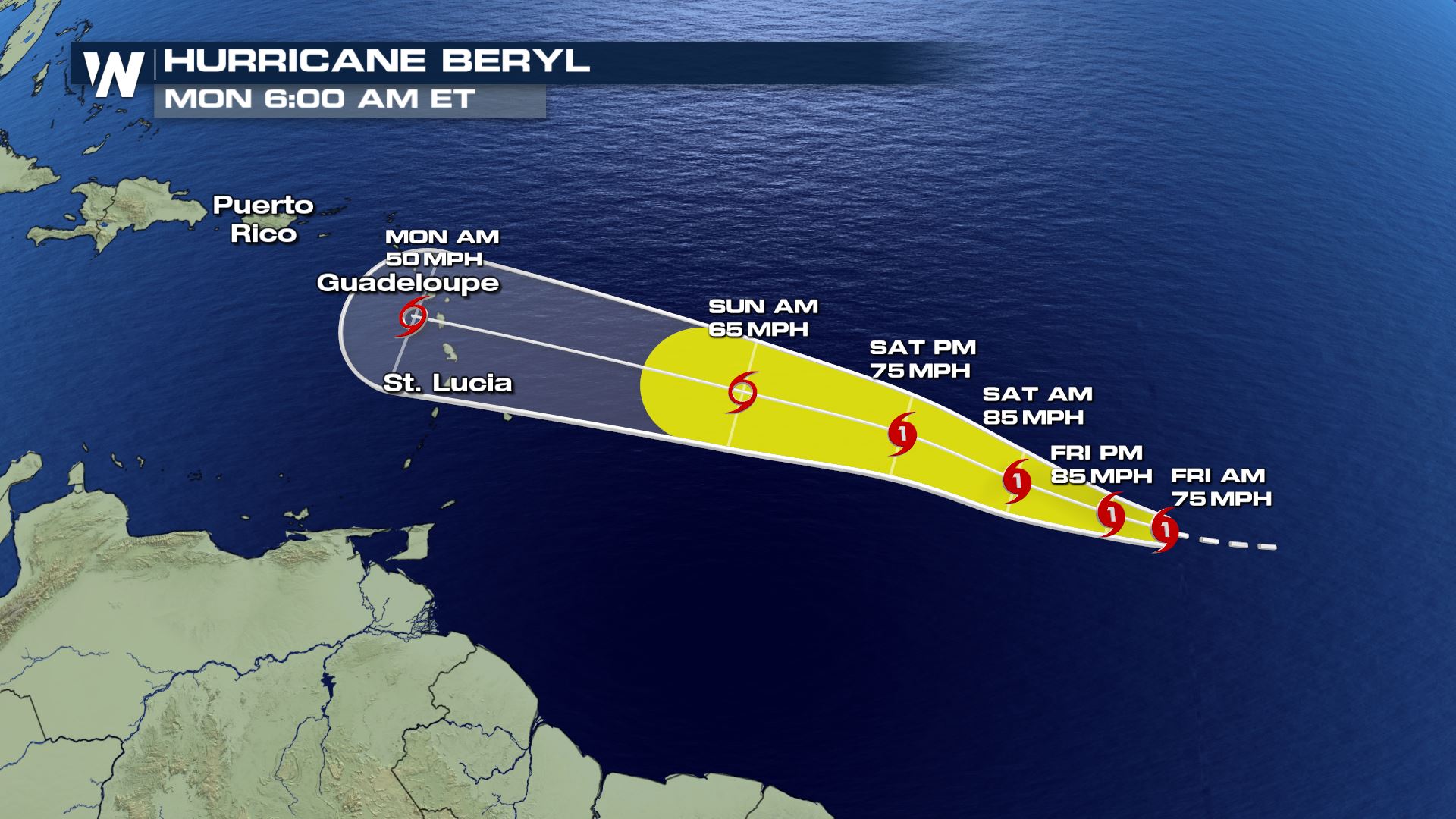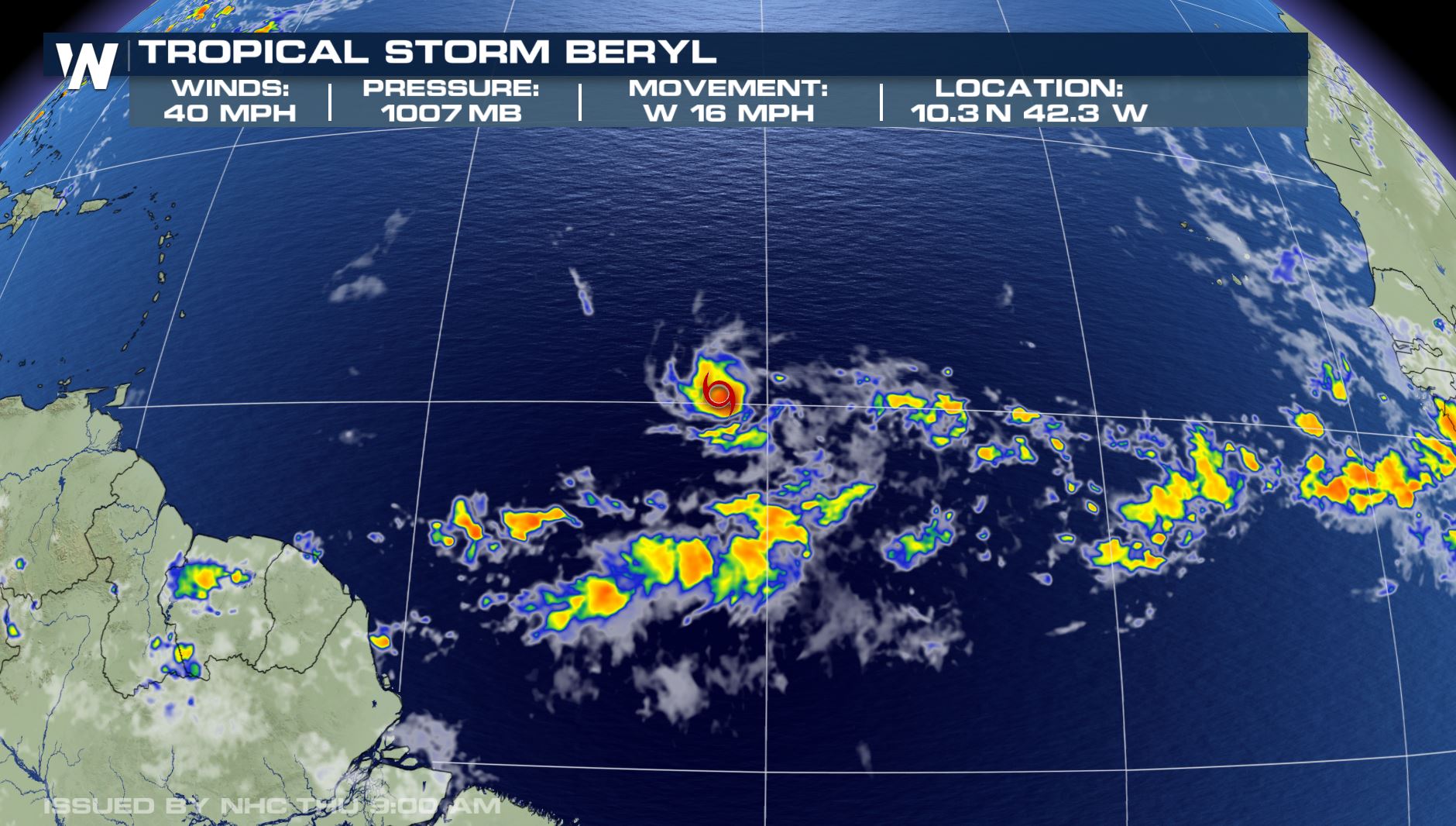Hurricane Beryl’s Predicted Path and Intensity

Hurricane beryl prediction – Hurricane Beryl is anticipated to follow a northeasterly path, potentially making landfall in the southeastern United States within the next 24-48 hours. Its exact trajectory remains uncertain due to various atmospheric and oceanic factors.
Predicted Path, Hurricane beryl prediction
The current forecast predicts that Hurricane Beryl will continue moving northeastward, skirting the coast of Florida before potentially making landfall in South Carolina or North Carolina. The specific landfall location and timing may vary depending on changes in wind patterns and ocean currents.
Hurricane Beryl is a powerful storm that has the potential to cause significant damage. The National Hurricane Center is currently tracking the storm and has issued a hurricane warning for the coast of Florida. While it is still too early to say for sure whether or not Beryl will hit Florida, it is important to be prepared.
Residents in the affected areas should take steps to secure their homes and property, and they should be ready to evacuate if necessary. Will Beryl hit Florida? The NHC is expected to provide more information about the storm’s path in the coming days.
Intensity
Hurricane Beryl is currently a Category 2 hurricane with maximum sustained winds of 100 mph. It is expected to strengthen slightly as it approaches the coast, potentially reaching Category 3 or higher status. This intensification could result in increased wind speeds, storm surge, and rainfall.
Hurricane Beryl is expected to bring heavy rainfall and strong winds to the Gulf Coast. The hurricane beryl forecast predicts that the storm will make landfall in Florida on Tuesday. Residents in the affected areas should prepare for flooding and power outages.
Potential Impacts of Hurricane Beryl: Hurricane Beryl Prediction

Hurricane Beryl is predicted to bring heavy rainfall, strong winds, and storm surge to the areas it passes through. The most likely areas to be affected are coastal communities and inland areas near the hurricane’s path.
The potential impacts of Hurricane Beryl include:
- Flooding: Heavy rainfall can cause flooding, which can damage property and infrastructure, and displace residents.
- Wind damage: Strong winds can cause damage to buildings, power lines, and trees, and can also create hazardous conditions for people and animals.
- Storm surge: Storm surge is a wall of water that can inundate coastal areas, causing extensive damage to property and infrastructure, and posing a serious threat to human life.
- Loss of life: Hurricanes can cause loss of life due to drowning, wind damage, and other hazards.
There are a number of measures that can be taken to mitigate the impacts of Hurricane Beryl, including:
- Evacuation plans: Evacuating residents from areas that are likely to be affected by the hurricane can help to save lives and reduce property damage.
- Emergency preparedness: Having an emergency plan in place can help to ensure that you and your family are prepared for the hurricane, and can help to reduce the risk of injury or death.
- Infrastructure improvements: Investing in infrastructure improvements, such as seawalls and levees, can help to protect coastal communities from storm surge and flooding.
By taking these measures, we can help to reduce the impacts of Hurricane Beryl and protect our communities.
Comparison of Hurricane Beryl to Previous Hurricanes

Hurricane Beryl has drawn comparisons to several previous hurricanes that have affected the same region. These hurricanes include Hurricane Katrina, Hurricane Rita, and Hurricane Ike. While each of these hurricanes had its own unique characteristics, they share some similarities with Hurricane Beryl, including their paths, intensities, and impacts.
One of the most notable similarities between Hurricane Beryl and previous hurricanes is their paths. All of these hurricanes made landfall in the Gulf of Mexico, and they all followed similar paths across the region. This is due to the fact that the Gulf of Mexico is a relatively small body of water, and hurricanes that form in the Atlantic Ocean are often drawn to the Gulf by the warm waters and low pressure systems that are common in the region.
Another similarity between Hurricane Beryl and previous hurricanes is their intensities. All of these hurricanes were Category 3 or higher hurricanes, and they all caused significant damage to the areas they hit. Hurricane Katrina was the most intense of these hurricanes, with winds of up to 175 miles per hour. Hurricane Rita was also a Category 5 hurricane, with winds of up to 180 miles per hour. Hurricane Ike was a Category 4 hurricane, with winds of up to 130 miles per hour.
Finally, Hurricane Beryl and previous hurricanes have all had similar impacts on the areas they have hit. These impacts include flooding, wind damage, and power outages. Hurricane Katrina was the most destructive of these hurricanes, causing an estimated $160 billion in damage. Hurricane Rita also caused significant damage, with an estimated $12 billion in damage. Hurricane Ike caused an estimated $40 billion in damage.
Trends in Hurricane Activity
The similarities between Hurricane Beryl and previous hurricanes suggest that the region is at risk for future hurricanes of similar intensity and impact. In recent years, there has been an increase in the number of hurricanes that have made landfall in the Gulf of Mexico. This trend is expected to continue in the future, as the climate continues to change and the waters of the Gulf of Mexico become warmer.
The increasing frequency and intensity of hurricanes in the Gulf of Mexico is a major concern for the region. These hurricanes can cause significant damage to property and infrastructure, and they can also lead to loss of life. It is important for residents of the Gulf Coast to be prepared for hurricanes, and to take steps to mitigate the risks associated with these storms.